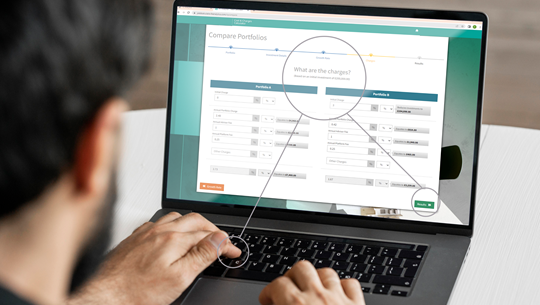In the eight years since the introduction of UCITS KIIDs, the Covid-19 pandemic is presenting the first real test where the markets are experiencing sustained periods of volatility.
Mikkel Bates, Regulatory Manager at FE fundinfo, provides an overview of UCITS fund obligations and how fund groups can mitigate compliance risk through continuous monitoring of SRRIs.
Transcript
0:03
Hello, I’m Mik Bates, Regulatory Manager at FE fundinfo.
0:07
I’m going to talk briefly about the obligations and mechanics of monitoring the Synthetic Risk and Reward Indicator – or SRRI – on UCITS KIIDs.
0:15
particularly given the context of the huge increase in market volatility as a result of the Covid-19 pandemic, and how we support fund groups in meeting their regulatory obligations.
0:28
To start with, let’s just recap what the SRRI is.
0:32
With the advent of UCITS KIIDs in 2012,
0:34
all groups could, for the first time, show how risky their funds are in a comparable way, as every UCITS fund has to calculate its price volatility over the previous five years, rescale it to an annualised number, and then, using that annualised volatility, arrive at a Risk and Reward number between 1 and 7.
0:52
This would then be highlighted on the slide, as shown here.
0:57
Most equity funds, since UCITS KIIDs have been around, have fallen into the SRRI levels 4 or 5, ie they have had annualised volatility of between 5 and 15%.
1:07
But, as we know, most equity markets have, for the last decade, had a prolonged period of historically low volatility.
1:13
And since the coronavirus started to have an impact, this complacency has come to an abrupt end.
1:21
Now it is very clear that the volatility, or SRRI level, of funds isn’t static,
1:26
CESR (the EU regulator now known as ESMA) put in place a couple of measures in its instructions on the calculation of the SRRI to ensure that the level shown on a UCITS KIID was always accurate, fair and not misleading, while avoiding the possibility of KIIDs being updated at every sign of a slight change in market or fund volatility.
1:45
They required firstly that the calculations behind the SRRI should be run weekly in the case of daily-priced funds and a record kept of each calculation to monitor any changes.
1:57
Secondly, the current level must be compared each week to the published level.
2:02
If the published level hasn’t appeared at all in the calculations for 4 months, it’s time to update the KIID with the level that has appeared most over that time.
2:10
In the example shown here, taken from the Luxembourg industry association ALFI’s Q and As in the lead-up to the launch of UCITS KIIDs, the fund has a published SRRI of 5, but over the 4 month period, the weekly calculations throw up mostly sixes and a few sevens,
2:25
so the KIID needs to be updated without undue delay to show an SRRI of 6.
2:31
If a single instance of a 5 had appeared at any point in that timeline, the clock would start again and the published KIID would be valid for at least the next 4 months.
2:42
What does FE fundinfo do in terms of calculating and monitoring the SRRI?
2:47
First of all, we run the calculations, which we had independently accredited at the time by AKG Actuaries and Consultants. And all calculations in our system are archived and retrievable.
2:54
And all calculations in our system are archived and retrievable.
2:59
We then monitor the output for any instance of the actual volatility being different from the published one.
3:04
For daily priced funds, which make up the vast majority of UCITS, we run these calculations weekly, as required.
3:11
Because of the huge increase in the number of funds affected by the current volatility – from single figures each week previously up to hundreds of our clients’ funds –
3:19
we are sending emails after 14 weeks to warn groups to prepare for the impending extra work they will need to do.
3:27
And once they reach the 4-month or 16-week milestone, we will send them a system alert every day until they publish an updated KIID.
3:35
Based on our clients’ data, groups will be republishing, on average, between 30 and 50% of their KIIDs over the next 6 weeks or so.
3:42
This level of republication across all fund groups hasn’t happened outside the scheduled annual refresh since the start of UCITS KIIDs.
3:51
The irony is that, if the market volatility settles down again to the level we had become used to over the last ten years, before the expected demise of UCITS KIIDs at the end of next year, we may end up going through a similar exercise to republish the same KIIDs with a lower SRRI score once more.
4:08
For more information on how we can help you with navigating your regulatory obligations as a fund manager or distributor, please contact us at [email protected].
4:18
Thank you.




